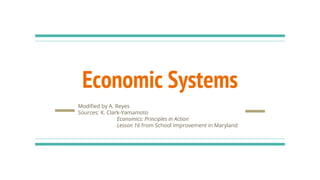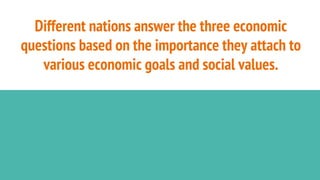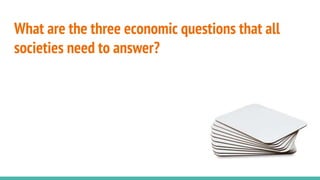Economic systems are the methods used by societies to produce and distribute goods and services. There are four main types of economic systems: traditional, command, market, and mixed. Traditional economies rely on customs and habits, command economies involve central government planning, and market economies use voluntary exchange. Most modern nations have mixed economies that incorporate both government intervention and market forces.

































